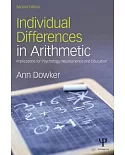Recent work in cognitive science, much of it placed in opposition to a computational view of the mind, has argued that the concept of representation and theories based on that concept are not
sufficient to explain the details of cognitive processing. These attacks on representation have focused on the importance of context sensitivity in cognitive processing, on the range of
individual differences in performance, and on the relationship between minds and the bodies and environments in which they exist. In each case, models based on traditional assumptions about
representation have been assumed to be too rigid to account for the effects of these factors on cognitive processing. In place of a representational view of mind, other formalisms and
methodologies, such as nonlinear differential equations (or dynamical systems) and situated robotics, have been proposed as better explanatory tools for understanding cognition.
This book is based on the notion that, while new tools and approaches for understanding cognition are valuable, representational approaches do not need to be abandoned in the course of
constructing new models and explanations. Rather, models that incorporate representation are quite compatible with the kinds of complex situations being modeled with the new methods. This
volume illustrates the power of this explicitly representational approach--labeled "cognitive dynamics"--in original essays by prominent researchers in cognitive science. Each chapter
explores some aspect of the dynamics of cognitive processing while still retaining representations as the centerpiece of the explanations of the key phenomena. These chapters serve as an
existence proof that representation is not incompatible with the dynamics of cognitive processing. The book is divided into sections on foundational issues about the use of representation in
cognitive science, the dynamics of low level cognitive processes (such as visual and auditory perception and simple lexical priming), and the dynamics of higher cognitive processes (including
categorization, analogy, and decision making).





















